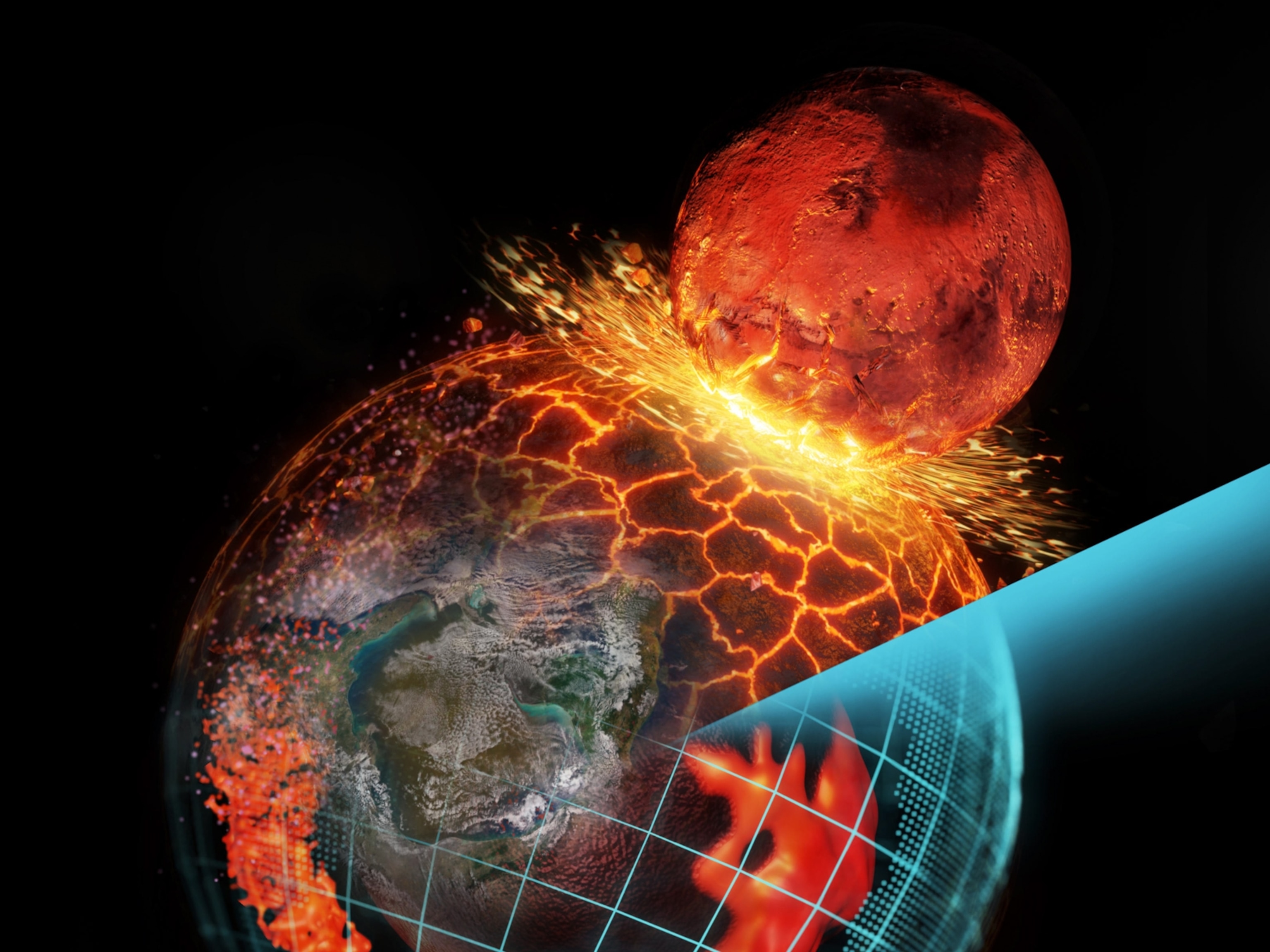
Antimatter Found Orbiting Earth—A First
Handful of particles trapped by planet's natural magnetism, study says.
Earth is wearing a thin antimatter belt, according to new data that revealed antiprotons trapped high above the planet.
Antimatter particles are mirror opposites of normal matter particles. For example, an antiproton is a negatively charged version of the proton, one of the basic constituents of an atom. (Related: "Proton Smaller Than Thought—May Rewrite Laws of Physics.")
When cosmic rays—high-energy particles from the sun and beyond our solar system—smash into atoms, they break them apart, creating a shower of exotic particles. A small percentage of these newly spawned particles is predicted to be antiprotons.
The trouble is that when antimatter and matter collide, both vanish in flashes of energy. Because our universe contains more matter than antimatter, any new antiparticles quickly disappear. (Read about a new material that may help explain why matter and antimatter are out of balance.)
But the European satellite PAMELA—short for Payload for Antimatter Matter Exploration and Light-nuclei Astrophysics—recently found a self-renewing supply of antiprotons in the Van Allen radiation belt. This belt is actually two donut-shaped rings of charged particles surrounding our planet, with an inner belt nestled under an outer belt.
The discovery confirms earlier predictions that Earth's magnetic field can trap antimatter particles created by the interaction of cosmic rays with our planet's atmosphere, said study team member Alessandro Bruno, an astrophysicist at the University of Bari in Italy.
(Find out more about how magnetism affects charged particles.)
Antiprotons Made by Escaped Particles?
PAMELA was launched in 2006 to study cosmic rays and any particles that appear due to the rays' collisions with molecules in Earth's atmosphere.
Over a period of about two and a half years, sensors aboard PAMELA found evidence of 28 antiprotons orbiting Earth.
That might not sound like a lot, but it's about three orders of magnitude higher than the average antiproton concentration predicted in empty space, said Vassilis Angelopoulos, a professor of space sciences at the University of California, Los Angeles, who was not involved in the find.
In fact, the bulk of antiprotons detected by PAMELA were likely created indirectly, the University of Bari's Bruno said.
When cosmic rays break apart atoms several tens of miles above Earth's surface, they also generate particles called antineutrons.
Some of "these antineutrons escape the atmosphere and subsequently decay into antiprotons at much higher altitudes," where the PAMELA spacecraft flies, Bruno explained in an email.
(Related: "Heaviest Antimatter Found; Made in U.S. Atom Smasher.")
The antiprotons were discovered in a particular region of the Van Allen belt called the South Atlantic Anomaly, where the inner ring of the belt dips closest to Earth's surface.
Antiprotons likely exist in other parts of the Van Allen Belt as well, but they are orbiting at altitudes too high for PAMELA to detect, the scientists say. (Related: "Thunderstorms Shoot Antimatter Beams Into Space.")
Space Station Device to Boost Antimatter Science
Physicists have successfully created and even briefly confined antimatter here on Earth.
But the discovery of a natural reservoir of antiprotons in space provides a unique opportunity to study the rare particles in their natural state, Angelopoulos said.
"The magnetosphere is a pristine laboratory for studies of these basic processes, because there are no interactions with laboratory walls or laboratory detectors" to interfere with the particles and facilitate their escape, he said.
Overall, PAMELA's continued antiparticle count could have significant implications for understanding cosmic-ray production and propagation across the galaxy, as well as the paths any resulting particles take through Earth's atmosphere, study co-author Bruno said.
PAMELA's results could also be corroborated by the Alpha Magnetic Spectrometer, a $15-billion cosmic-ray detector managed by the U.S. Department of Energy that was ferried to the International Space Station earlier this summer, he added. (See "Space Shuttle Launch to Put Giant Ray Detector in Space.")
NASA scientists have even entertained the idea of capturing and harnessing antimatter to propel the next generation of spacecraft, but such scenarios are still a long way off.
The trapped antimatter was recently described online in the Astrophysical Journal Letters.





